Discover Munich

Munich is the capital and largest city of the federal state of Bavaria. The city lies along the Isar river and it is near to the edges of the Northern Alps. The German name for Munich, München, means „Home of Monks“ and it traces its origins to the Benedictine monastery founded in the area around the mid-8th century.
From a Medieval settlement to a regional capital with a proud artistic and cultural community, Munich’s streets are filled with beautiful historic buildings, world-class museums, art galleries, and is a host to plenty of cultural and sporting events. The city is a home to a perfect blend of modern and traditional and it invites its visitors to immerse in the atmosphere and explore further.
Munich Highlights
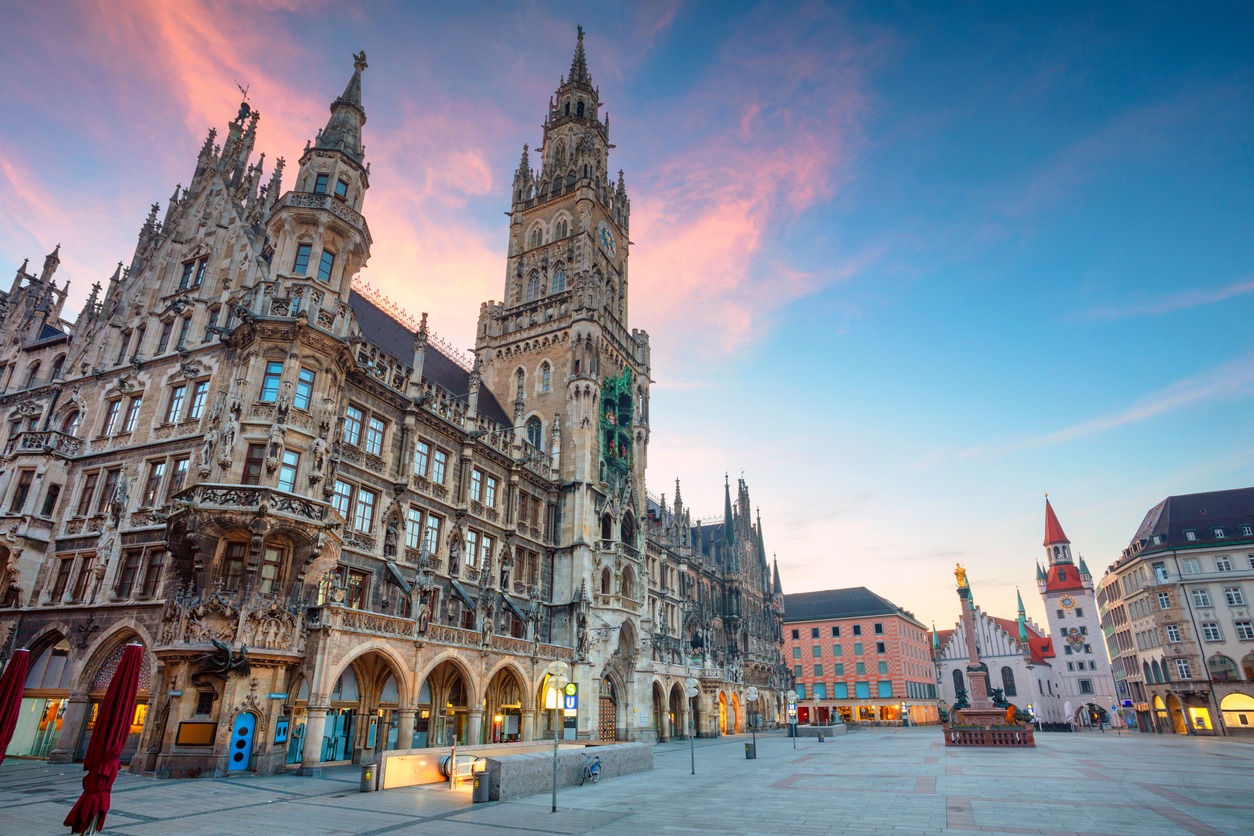
Marienplatz
The picturesque Marienplatz has been the heart and soul of the Old town since the city was founded. This is the place where jousting tournaments were held and it was the main marketplace in the Middle Ages. Nowadays, the square is surrounded by some of the city’s most emblematic sights such as the Old and New Town Halls, the Column of St. Mary, Fischbrunnen – a fountain in the middle of the square which is one of the city’s most popular meeting points. Take a moment to watch the famous Glockenspiel which has been enchanting visitors for over 100 years, as its mechanical figures dine, joust, and dance. While enjoying the show, take some time to appreciate the beautiful Neo-Gothic façade.
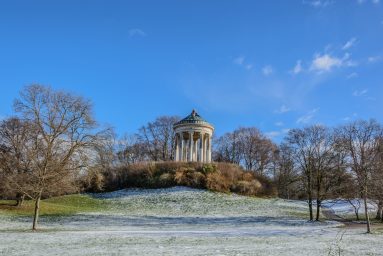
The English garden
The English garden is one of the largest urban parks in the world and it is often called “the green lung” of the Bavarian capital. It was commissioned in 1789 by Elector Karl Theodor. Today, the people of Munich love the English Garden as it offers paths through vibrant forests and landscaped gardens. Strolling through the park, you might come across a Chinese pagoda, a Japanese tea house, or a small Greek temple, the Monopteros, where you could enjoy the Munich skyline at sunset. A curiosity in the park is the Eisbachwelle, a wave where crowds gather to watch surfers’ stunts. From a lake to pagodas and beer gardens, the park has something to offer for everyone.
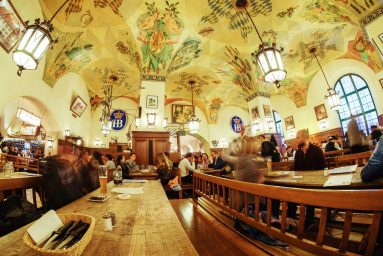
Hofbräuhaus
Hofbräuhaus is one of the world’s most famous beer halls and breweries. Established in 1589, the brewery quickly became renowned for its high-quality beer, which was initially reserved for the royal family and their guests. Today, Hofbräuhaus is a major tourist attraction and a beloved local institution, drawing beer enthusiasts from around the globe. Its iconic beer hall offers a classic Bavarian experience, complete with traditional music, hearty cuisine, and classic Bavarian attire. It also holds a special place in the heart of the annual Oktoberfest, where its beer is a staple. Hofbräuhaus continues to celebrate its legacy, remaining a symbol of Bavarian culture and hospitality for both locals and visitors.
Munich Museums
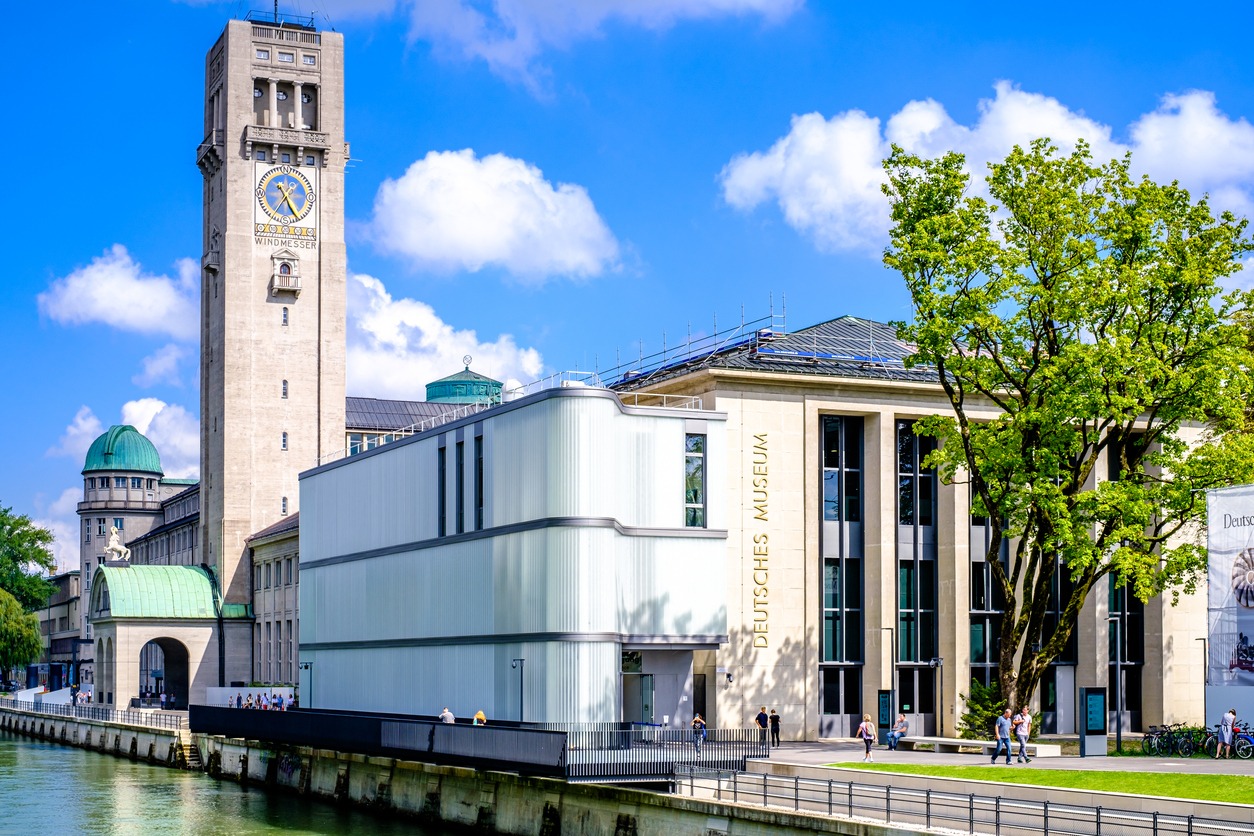
Deutsches Museum
Founded in 1903, the German Museum of Masterpieces of Science and Technology, as it is officially known, is located in a building on a small island in the Isar River. The museum is a constant time travel between early and high tech, as you follow the development of each scientific and technical discipline from its beginnings to the present. The subjects covered by the museum are diverse – from astronomy to marine biology, nanotechnology to mining, clocks and musical instruments all the way to pharmaceuticals. After being closed for more than 5 years due to renovations, the museum is now open and awaiting its visitors.

The BMW Museum
The BMW museum is housed in a futuristic circular building designed to resemble the engine of a race car, and it is home to exhibitions showcasing the history and development of the brand. The BMW Museum opened its doors in 1973, and it is part of a shared complex with the BMW skyscraper, BMW Welt, and the BMW Group’s home plant. Highlights include the original car from the James Bond film “Tomorrow Never Dies”, the BMW Isetta. The Museum is a dream destination for car lovers with its fascinating exhibitions of vintage cars, racing vehicles, and motorcycles amongst much more.
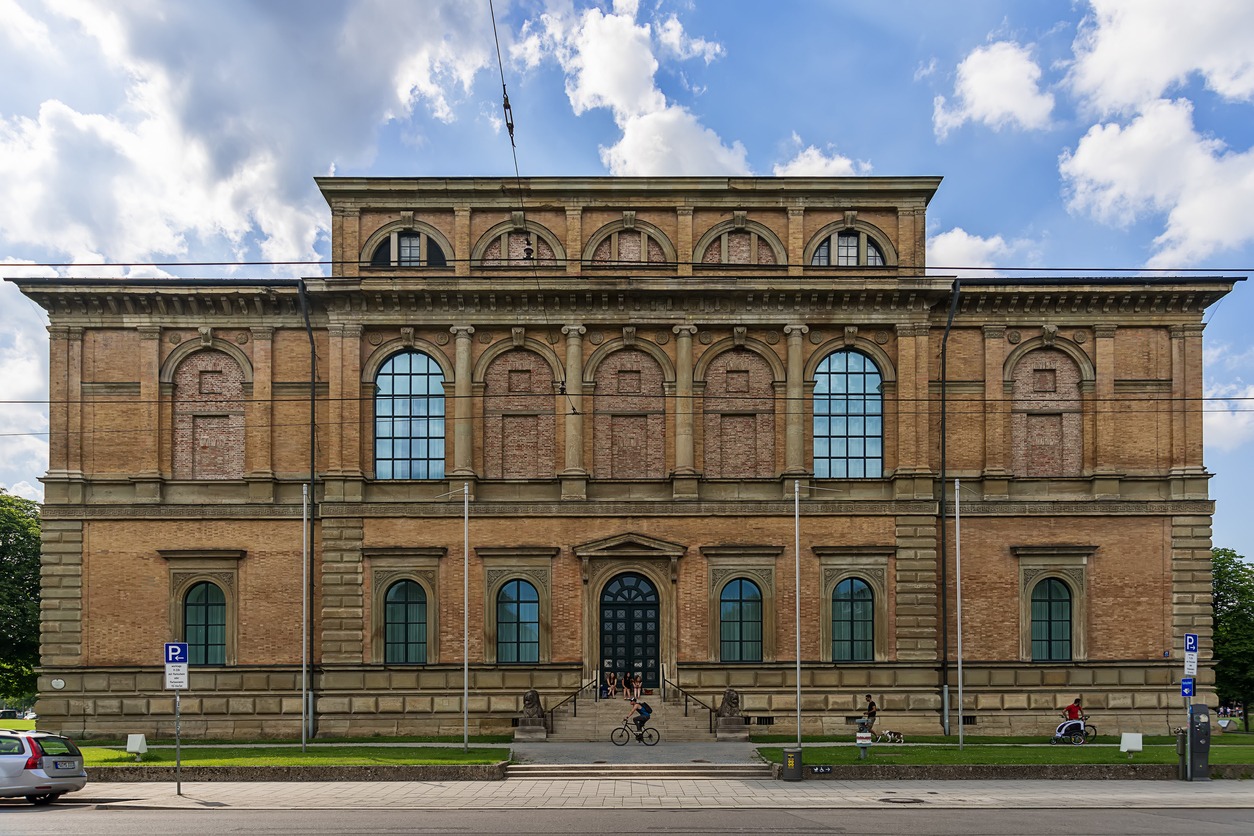
The Old Pinakotek
The Old Pinakothek is one of Germany’s most important art museums and one of the oldest galleries in the world. The museum dates back to the Wittelsbach family’s personal collection of art in the 16th century, and nowadays it has grown to more than 700 pieces of art. Visitors can see pieces by Raphael, Titian, El Greco, Rubens, Rembrandt and Boucher. One of the masterpieces in the museum is the painting “Madonna of the Carnation”, which makes it the only German museum to have its very own Leonardo da Vinci. The New Pinakothek is located nearby where art ranging from Rococo to Art Nouveau is displayed.
Day tours from Munich
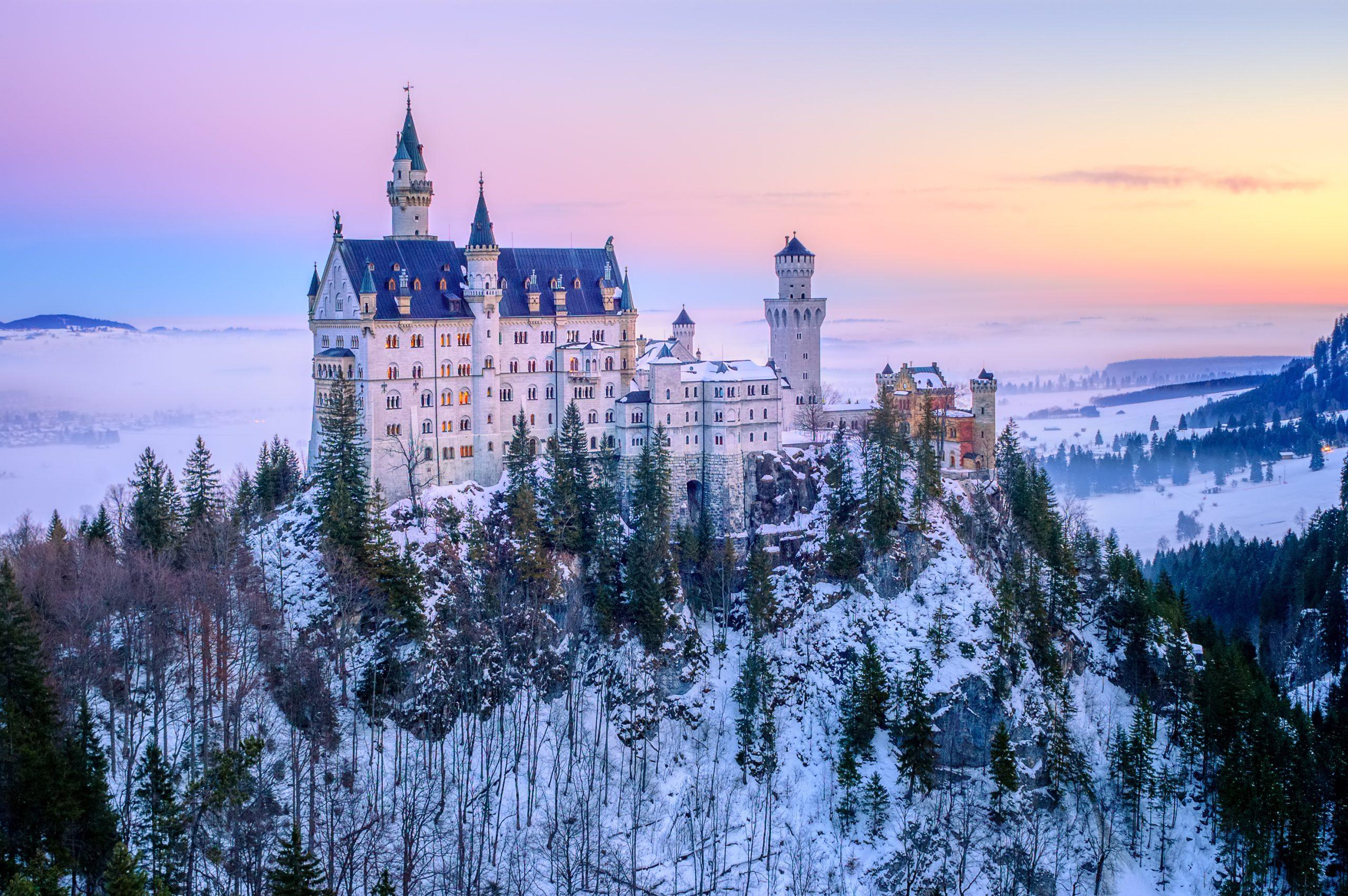
Neuschwanstein Castle and Linderhof Palace
Neuschwanstein castle and Linderhof palace are both exquisite architectural gems and should not be missed during your trip to Munich. They were built in the 19th century in Bavaria by King Ludwig II of Bavaria, also known as the “Fairytale King”. Neuschwanstein was built in honor of the renowned composer Wagner and many rooms in the castle’s interior were inspired by Wagner’s characters. It is often said to be the inspiration for the Disney castle.
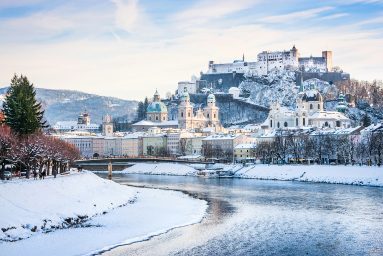
Salzburg, Austria
A unique combination of scenic Alpine landscape and architectural richness has led to Salzburg’s reputation as one of the most beautiful cities in Europe. The city owes its fame to the incomparable charm, the scenic beauty of its surroundings and the coincidence that Mozart was born there. Must-sees in Salzburg are Hohensalzburg – fortress which offers fantastic views of the city, Mirabell Palace & Gardens, Mozart’s birthplace, and the Cathedral which is without a doubt the main attraction of the Old Town.
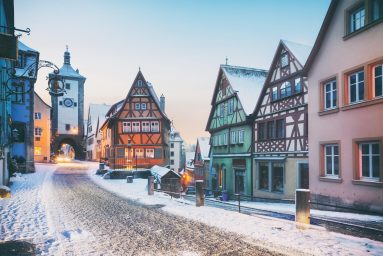
Rothenburg ob der Tauber
Rothenburg ob der Tauber is a charming and picturesque town nestled in the heart of Germany’s Franconia region and a true medieval gem. You can’t help but ask yourself whether time has stood still, as you roam through the Old Town with its hidden squares and tucked-away corners with towers, fountains, gates and wine taverns. Top sights in Rothenburg are The Plönlein – the ensemble which includes the fountain in front of the lone timber-frame house and the two towers of the old city wall, the Marktplatz with its Town Hall, and St. James’ Church.

